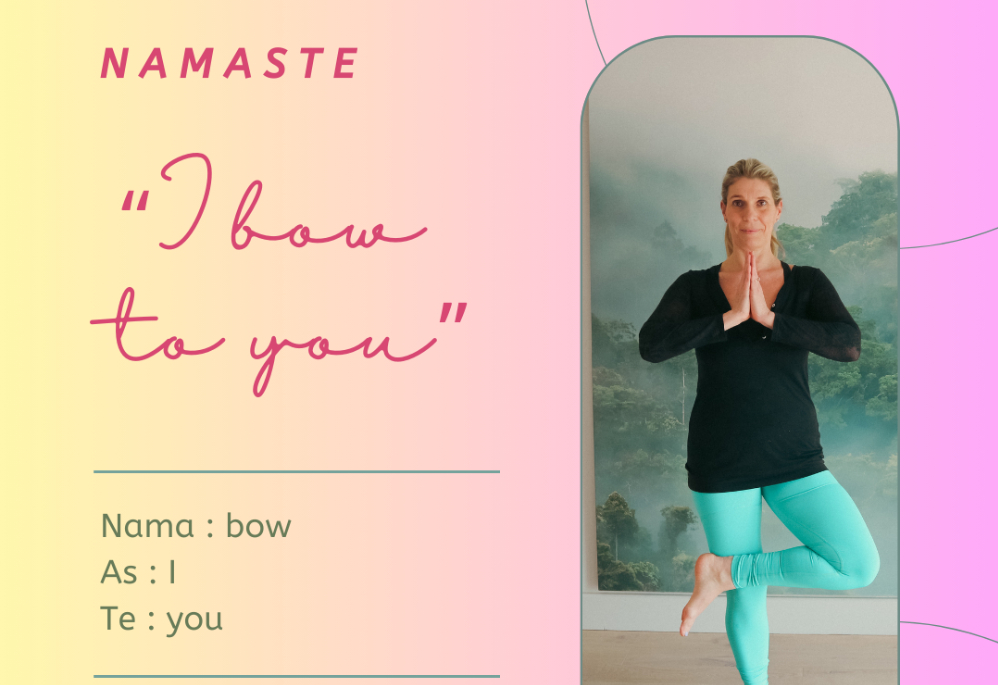
What is the meaning of Namaste that we start and close each class with?Namaste has actually two elements to it, the Mantra – the spoken words – and the Mudra – the hand gesture. Let’s start with the Mantra aspect. In Sanskrit ‘Nama’ means to bow, ‘as’ means I, and ‘te’ means you. Therefore it translates to ‘bow I you’ or ‘I bow to you’.Saying these words to each other we acknowledge the soul that we see in the other person, and also the soul in ourselves. ‘I see what is holy in you.I see what is noble in you.I see what is beautiful in you.I love and respect you without conditions.The light in you shines brightly.’The second aspect is the Mudra, the hand position. Touching our palms together brings the left and the right side of the body – the Feminine and the Masculine energy – together to a neutral, calm place. The thumbs gently touching the sternum activate the energetical heart centre. When we bow our head, we connect the head and the heart together. The hand gesture Namaste, with the palms held together in prayer position in front of the heart center and the bowing of the head, represents the belief that there is a Divine spark within each of us that is located in the heart center. Ideally, Namaste should be done both at the beginning and at the end of the class. Usually, it is done at the end of class because the mind is less active and the energy in the room is more peaceful. The teacher initiates Namaste as a symbol of gratitude and respect toward her students and her own teachers and in return invites the students to connect with their lineage, thereby allowing the truth to flow – the truth that we are all one when we live from the heart.